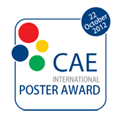
| |
EnginSoft - Conference Abstracts
EnginSoft International Conference 2009 |
Modelling and Simulation of contacts in Multi-Body Simulation with SIMPACK |
Mulski Steve - INTEC GmbH (Germany) |
Abstract |
When we consider the course of a normal day in our lives we quickly realize that contact mechanics plays an integral and indispensable role in essentially everything we do. From simply laying a pencil on a desk top, walking down the street, all the way to guiding a railway vehicle through switches and crosses, contact mechanics is omniprevalent. A brief overview of some industrial sectors where contact mechanics plays a significant role gives insight into just how diversified and encompassing contact mechanics is.
The number of applications and modelling fidelity of contact mechanics is virtually limitless and is therefore perhaps the most diversified and demanding field of multi-body simulation. Not only do the modelling elements have to cover an extensive range of applications but additionally the solvers used have to be robust enough to handle the extreme non-linear “shocks” resulting from the contact mechanics. Furthermore, there is no one “best” method suitable for all applications. A decision must be made based upon the tradeoff between accuracy and the effort required for modelling, validation and simulation (i.e. CPU time). |
Back to index |



